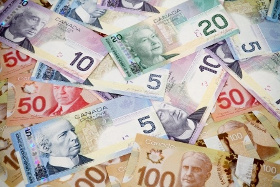Saudi Arabias Finance Minister Ibrahim Al-Assaf agreed with the U.S. Treasury Secretary Henry Paulson that the riyals peg to dollar is serving good to the countrys economy and assured him that Saudi Arabia has no plans to unlink the currency.
During his four-day visit to the Middle East Paulson was to convince the regional financial officials to abstain from depegging their currencies from dollar and to increase the oil output in order to cut the energy cost growth. Keeping dollar pegs is very important to the U.S. currency as its one of the few factors that keep dollar up now.
Middle Eastern countries tie their national currencies rate to dollar and also have to maintain similar refinancing rates. This practice protects them from the significant Forex risks, while their foreign reserves are filled mainly with the dollar revenue.
Depegging the local currencies from the U.S. dollar would allow for a more flexible inflation control, which is especially needed now, when consumer prices accelerated to their record maximums in the region. Kuwait was the first and the only Gulf country to drop the peg to dollar in May 2007. Since then Kuwaiti dinar gained about 8 percent against dollar.
Another reason for Gulf countries to keep the peg for now is their plan to establish a currency union by the end of 2010, which would involve a unified currency. A peg to dollar may help in making such transition more smoother.
Some of the Middle Eastern monetary officials expressed their opinion that the time to rethink the peg had already came, but the lack of the political will and some clear advantages of keeping the peg still prevents Saudi Arabia, U.A.E., Bahrain and Qatar to step aside from the U.S. dollar.
If you have any questions, comments or opinions regarding the Middle East,
feel free to post them using the commentary form below.



Be First to Comment